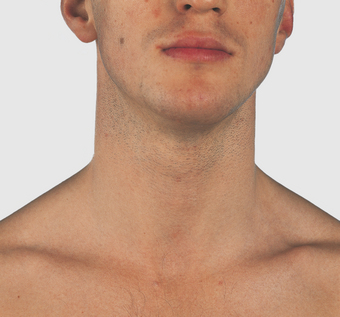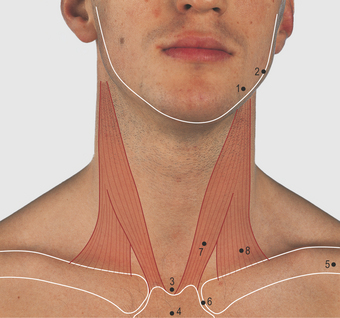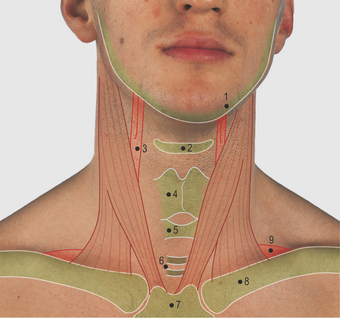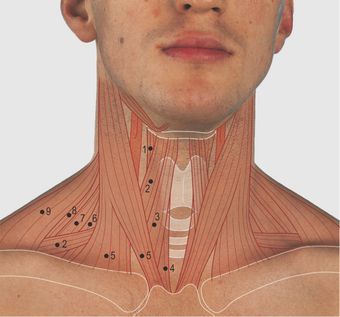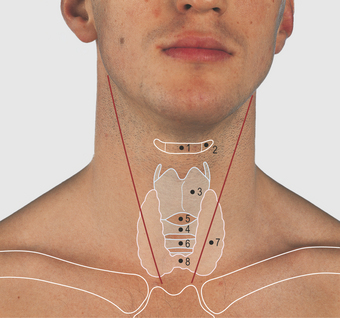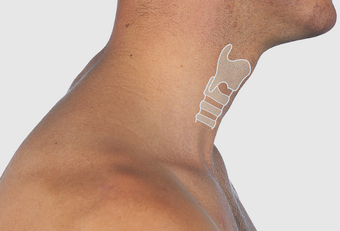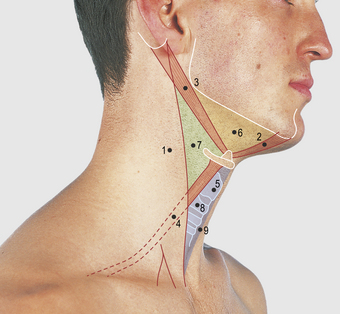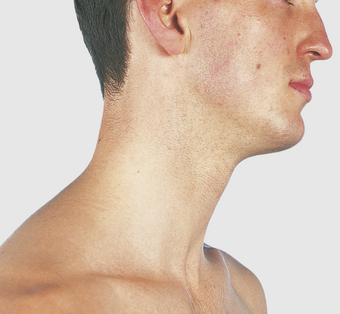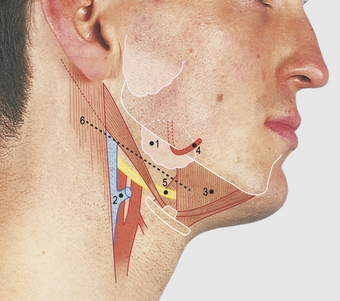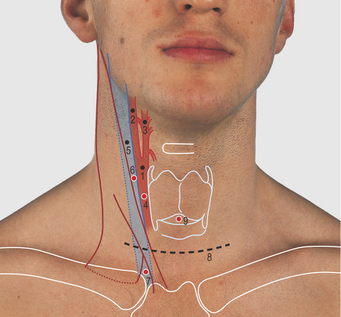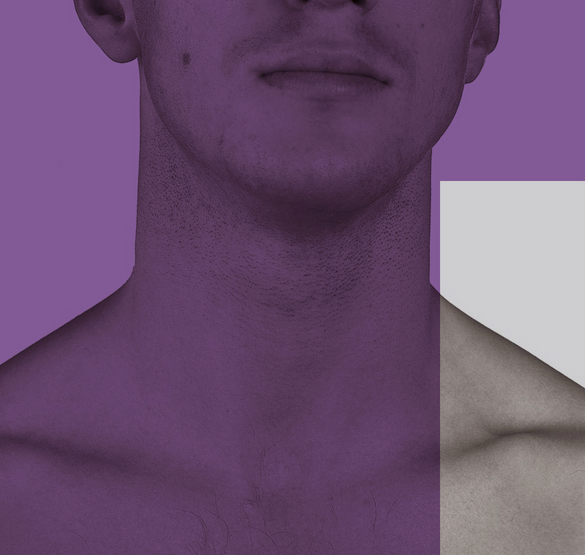
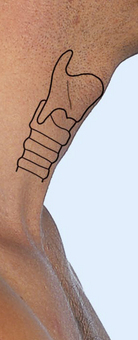 Chapter 3 Neck
Chapter 3 Neck
Anterior aspect of the neck (Figs 3.1—3.8)
The anterior aspect of the neck is bounded by the body and angles of the mandible superiorly, and the superior border and sternal notch of the manubrium and the clavicles inferiorly (Fig. 3.2). Laterally it is continuous with the lateral and posterior surface without a specific line of demarcation. The clavicles are subcutaneous throughout their length; they articulate medially at the sternoclavicular and laterally at the acromioclavicular (Fig. 3.13, p. 26) joints.
Larynx
The larynx lies in the midline covered only by skin, platysma muscle and superficial and deep fascia. It can be seen to rise during swallowing. Superiorly, the U-shaped hyoid bone is palpable; a central body is bounded laterally by two greater horns (Fig. 3.5). The bone can be gripped between finger and thumb and if gently pressed backwards and rocked from side to side, the tips of the greater horns can be felt grating against the bodies of the cervical vertebrae, confirming that only thin prevertebral muscles and the wall of the pharynx separate the larynx from the vertebral column. The hyoid bone is at the level of the third cervical vertebra. Suprahyoid muscles pass to the pharynx, the mandible and into the tongue.
The thyroid cartilage forms a midline prominence which is more obvious in the adult male; the angle between the sides of the cartilage (alae) is approximately 90° in the adult male (the Adam’s apple, Fig. 3.6) and 120° in the female (Fig. 3.7
Stay updated, free articles. Join our Telegram channel

Full access? Get Clinical Tree


